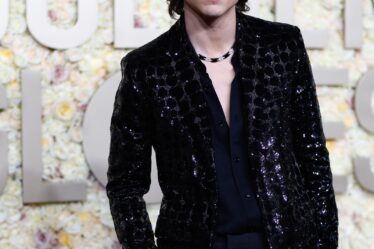
The sportswear market is increasingly split into two camps.
On one side are the incumbents: household names like Nike, Adidas, Puma and Under Armour, with global name recognition built over decades, and sales to match.
On the other side are the challengers: a cluster of sportswear brands angling to take their place alongside – or instead of – the incumbents. This group includes newer names such as On and Hoka, but also brands like Salomon, which traces its roots back to the mid-twentieth century but has only recently become a household name. The challengers exist across almost every major category, whether athletic footwear, activewear or technical sports gear. Lululemon, which arguably kicked off the challenger era when it crossed $1 billion in sales in the early 2010s, is by some estimates the biggest US women’s apparel brand, period. Challengers are present in most geographies too, whether it’s China’s Anta and Li-Ning or Kenya’s Enda.
No single challenger poses a threat to Nike or Adidas; even Luluemon has a 2.4 percent share of the overall sportswear market, according to a new report by RBC Capital Markets, compared to Nike’s 17 percent. But collectively, these upstarts are making a sizable dent.
In 2020, Nike, Adidas, Puma, Under Armour and Vans controlled 80 percent of the sportswear market, according to RBC Capital Markets. Today, that share is 65 percent. Between 2021 and 2023, revenue at 13 challenger brands tracked by the bank rose by an average annual rate of 29 percent, to the incumbents’ 8 percent. RBC projects that the challengers will continue to outperform their more established rivals, growing at an 11 percent annual average rate between 2023 and 2026, compared to the incumbents’ 5 percent growth rate.
This was a period in which growth began to stall for Nike, thanks to a host of issues including unsuccessful internal restructurings, a lack of product innovation and consumer fatigue with retro sneaker franchises like Air Force 1s and Jordans. Adidas was also reeling from the loss of its Yeezy partnership. Brands like On, Hoka, Salomon and Arc’teryx spotted underserved niches, whether it was new sneaker styles or niche sports where they could capture consumers’ imaginations with new technologies and hyper-focused marketing.
“Incumbent brands have arguably over-focused (and relied upon) their lifestyle offering in recent years, which combined with other factors… created the space and opportunity for challengers to establish themselves particularly in more technical categories such as premium fabrics, technical outerwear, technical footwear, casual running and so on,” the RBC report said.
These smaller brands also became fashion names at the forefront of the sportstyle movement, which saw performance gear like trail shoes or technical shell jackets become coveted fashion items.
Nike and Adidas aren’t going anywhere. Nike’s revenue of $51 billion dwarfs the rest of the category, and is more than double that of its closest rival Adidas. The pair account for a combined 25 percent of global sportswear market share, according to RBC Capital Markets. (On, for example, has less than 1 percent.)
The gap is continuing to narrow, however. In May, On announced record quarterly earnings and reaffirmed its expectations for net sales in 2024 to reach “at least” CHF 2.25 billion ($2.48 billion), a 30 percent increase from its annual revenue of CHF 1.79 billion the year before. Last week, Deckers revealed Hoka grew annual revenue by 28 percent in the year ended March 2024, reaching $1.8 billion, up from $1.1 billion the year before. New Balance plans to reach $10 billion in sales “in the next few years”, up from $6.5 billion in 2023, chief operating officer Dave Wheeler told BoF in March.
Many of these brands are boosting sales by opening stores of their own and aggressively moving into top retailers, where sneaker sections are no longer just walls of Nike and Adidas. Salomon, for example, is leaning into the explosive growth of sportstyle, its fastest-growing category. On Monday, the brand announced the opening of the first-ever Salomon Sportstyle store in Paris’ Le Marais district, which will house popular sneaker franchises such as the XT-6 trail shoe, along with the brand’s collaborations with luxury houses such as MM6 Maison Margiela.
There are also limits to how big a disruptor can get before it starts to run into incumbent problems. Lululemon built an empire by zeroing in on underserved markets (yoga, and female athletes generally), and touched off plenty of fashion trends. But the brand now faces complaints about stale product, and though it expects to grow sales by 11 percent this year to $10.7 billion, it is losing customers on the margins to newer brands like Alo Yoga and Vuori.
Investors are betting most challenger brands are a long ways from their peak. Since the start of the year, Asics’ share price is up over 110 percent, On’s stock is up 58 percent and Hoka-parent Deckers’ shares are up 60 percent. In comparison, Nike shares are down 11 percent, Puma’s are down 5 percent, and Under Armour is down 20 percent. (Adidas is an outlier; its stock is up 28 percent this year, thanks to the soaring popularity of its Samba and Gazelle sneakers and a better-than-expected turnaround after the termination of the Yeezy partnership.)



